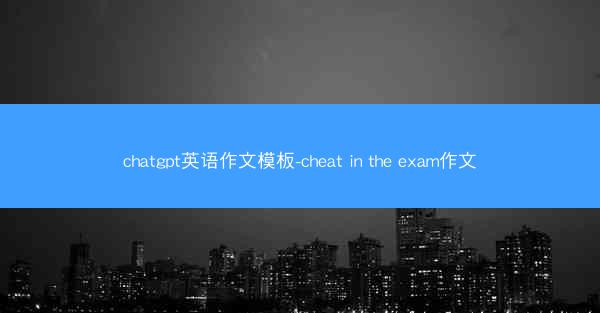chatgpt英文论文翻译(论文翻译英文论文能查出来吗)
 telegram中文版
telegram中文版
硬件:Windows系统 版本:11.1.1.22 大小:9.75MB 语言:简体中文 评分: 发布:2020-02-05 更新:2024-11-08 厂商:telegram中文版
 telegram安卓版
telegram安卓版
硬件:安卓系统 版本:122.0.3.464 大小:187.94MB 厂商:telegram 发布:2022-03-29 更新:2024-10-30
 telegram ios苹果版
telegram ios苹果版
硬件:苹果系统 版本:130.0.6723.37 大小:207.1 MB 厂商:Google LLC 发布:2020-04-03 更新:2024-06-12
跳转至官网

This article delves into the topic of ChatGPT English paper translation, exploring the challenges and solutions involved in translating academic papers from English to Chinese. It discusses the importance of accurate translation in academic research, the role of technology in facilitating this process, and the potential limitations and ethical considerations associated with automated translation tools like ChatGPT. The article aims to provide insights into the current state of academic paper translation and the future possibilities it holds.
Introduction
The translation of academic papers from English to Chinese is a crucial task for researchers and scholars who are not native English speakers. The availability of high-quality translations can significantly enhance the accessibility and impact of research findings. In recent years, the rise of artificial intelligence and machine learning has led to the development of advanced translation tools, such as ChatGPT, which promise to streamline the translation process. However, the question of whether the translated papers can be detected as such remains a topic of debate. This article will explore the various aspects of ChatGPT English paper translation, including its accuracy, limitations, and ethical implications.
Accuracy and Quality of ChatGPT English Paper Translation
One of the primary concerns when using ChatGPT for English paper translation is the accuracy and quality of the translations. While ChatGPT has shown remarkable progress in natural language processing, it is not without its limitations. The following points highlight the accuracy and quality aspects:
- Language Understanding: ChatGPT relies on its vast knowledge base and language models to understand and translate complex academic terminology. However, it may still struggle with idiomatic expressions or highly specialized jargon.
- Contextual Understanding: The ability to maintain the original context and intent of the text is crucial in academic translation. ChatGPT's contextual understanding can vary, leading to potential misinterpretations or loss of meaning.
- Consistency: Ensuring consistency in terminology and style across the translated document is essential. ChatGPT may not always achieve this level of consistency, especially when dealing with long and complex papers.
Limitations of ChatGPT English Paper Translation
Despite its advancements, ChatGPT faces several limitations that can affect the quality of the translated papers:
- Lack of Domain Expertise: ChatGPT, being a general-purpose language model, may lack the specific knowledge required for certain academic fields. This can lead to inaccuracies or misunderstandings in specialized content.
- Cultural Nuances: Translating academic papers involves not only language but also cultural nuances. ChatGPT may not fully capture these subtleties, potentially leading to miscommunication.
- Ethical Concerns: The use of automated translation tools raises ethical questions regarding the authenticity and integrity of the translated work. There is a risk of plagiarism or misattribution if the translated content is not properly credited.
Role of Human Reviewers in ChatGPT English Paper Translation
While ChatGPT can significantly aid in the translation process, the involvement of human reviewers is indispensable:
- Quality Assurance: Human reviewers can ensure that the translated text is accurate, consistent, and culturally appropriate.
- Specialized Knowledge: They can address any domain-specific issues that ChatGPT may not be able to handle.
- Ethical Oversight: Human reviewers can verify the integrity of the translated work and ensure proper citation and attribution.
Technological Advancements and Future Prospects
The continuous development of artificial intelligence and machine learning is likely to improve the accuracy and capabilities of translation tools like ChatGPT:
- Enhanced Language Models: Advances in language models could lead to better understanding and translation of complex academic texts.
- Customization for Academic Fields: Developing specialized models for different academic fields could address the lack of domain expertise.
- Integration with Academic Platforms: Integrating translation tools like ChatGPT into academic platforms could make the translation process more accessible and efficient.
Conclusion
ChatGPT English paper translation presents both opportunities and challenges. While it offers a powerful tool for researchers to access and disseminate academic knowledge, it is not a perfect solution. The accuracy, limitations, and ethical considerations associated with ChatGPT require careful attention. By combining the strengths of automated translation tools with human expertise, we can strive for high-quality translations that preserve the integrity and impact of academic research. As technology continues to evolve, the future of academic paper translation looks promising, with the potential to bridge language barriers and foster global collaboration in research.












